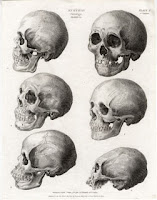Due to looking into various dance companies, I have learnt that there are sometimes requirements that you have to hit to even be considered for audition. These can be:
- Dance style.
- Bodily image.
- Height.
- Weight.
- Gender.
- Experience.
- Additional abilities.
"In terms of body image on stage, or how my aesthetic has changed or not in the past twenty-five years, it has become clearer to me that I need to work with dancers who are willing to go on the journey with me, willing to go through the process." Rosalind Newman (pg 158). She goes on to saying...
"Would I ever have a heavy person dance on stage? The way it would enter into my work is how much they could or could not express through their body. I think it wouldn't be the heaviness, but that I am still interested in a certain amount of physical expressivity. If the body was not able to get to that because of the heaviness, or because of the lack of training, then no, I wouldn't be interested, just for the sake of a different body type." Rosalind Newman (pg 158).
As I am in my third and final year I have realised that it is very important to be the best at what you can be! In my technique lessons I put 1000% effort into every single movement I do as my attitude is; "When I step into the studio, I never relax or let my mind wonder. I am 100% concentrated on what I am doing and explore different ways of moving compared to others (as we are all different). Having fun and enjoying my dancing will always brighten up my day. Standing out from others in a positive way is always good as I will be noticed for pushing boundaries."
Occasionally, if I feel like I haven't achieved the level I had set for that lesson, I get down and go over sections we had done in class to attempt to improve my dancing. Sometimes I record myself as it is an excellent way to evaluate my bodily movements as well as evaluating my mental state. If you dance with a strong and open mental attitude then you will go further in the studio, but if you have a closed mind then the opposite will occure.

Who inspires me and why?
- Rudolf von Laban.
Laban was a theorist. He was a dancer, choreographer, philosopher and writer who collaborated with European artists such as Mary Wigman. He came up with movement that he notated, and created Labanotation whilst still discovering the ways in which the body works.
Laban looked into rituals, movement habits and ancient dances. He was interested in various cultures and everyday patterns that occurred in movement. I enjoy this type of dance movement as it is always noticed for its kinaesthetic energies and interests into the inner bodily movements.
- Damien Walters.
This man is just amazing! He is a tumbler and free-runner that attempts anything. No matter how dangerous he will attempt it in some way, shape or form. He excites his audience and keeps them on edge with the stunts he does.
I enjoy the performances he put's on and the way he choreographs his movements together. He is very clever in what he does. He is a strong performer. Take a look at his showreel.
- My teachers inspire me more than anything. They have all had their own fantastic experiences with dance and performing and they can encourage me to do things to improve. They are always there if I am in any need of help. Due to them observing us all when we dance they can see what bits I need to Improve on. Occasionally they don't give me a lot of feedback in class, and I feel it would be better and would help me to improve a lot more if they informed me of different ways to alter certain elements of my dancing. I also watch and pay as much attention as possible to how they move and I attempt it fully. Sometimes I try to alter the dynamics as I feel that I could look a little better or more eye catching when changing the tempo of the phrase. Rebakah has encouraged me to do this as when I changed the tempo she loved it!
I would love to get as much experience as possible so I have signed up for various performances in and out of university.
My aim is to get into Cirque Du Soleil and Aerial or Circus's before I decide to apply for a dance company. After this I will hopefully have a lot of experience and I would then like to travel various countries learning and teaching dance styles. Once I have completed my journey I would like to build a dance company (if possible), that includes extra-ordinary, random and weird dance that tests limits and is different from anything ever seen before. This with obviously include any possible details about the body; inner and outer.
"It's about honesty. The work is in opening to what is genuine. I try to create an open space that lets people in. The big challenge is in letting myself be who I am. It is very scarey to go out there, to physically go out there, letting go of everything that fixes. So that is my work, to create an atmosphere of open-ness, so the audience and I can trust the moment of play that is happening. I cannot let the fear block me at that point or the process will stop. This dynamic attck is attractive but dangerous." I feel that this is a good statement to have in the back of your my because it is telling me to be myself and express myself as 'me' to help create a strong atmosphere for performance.


































